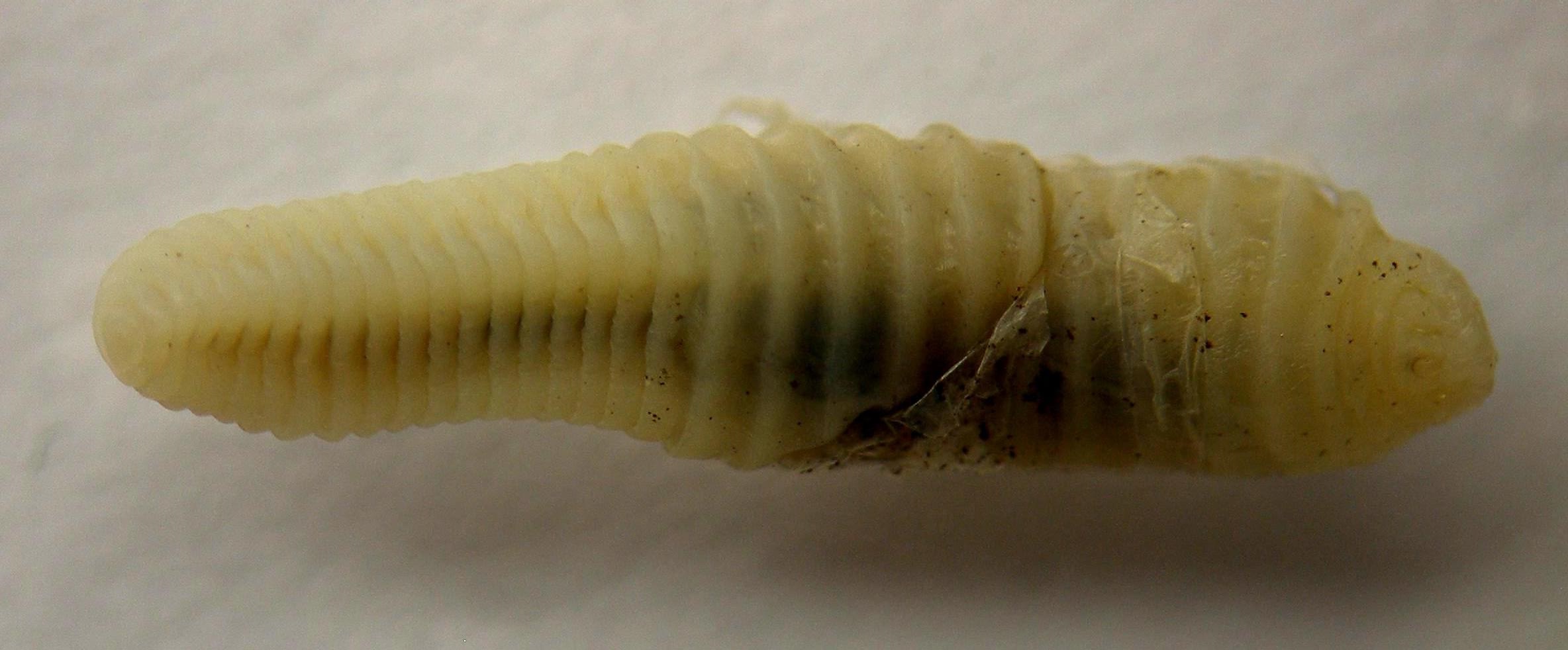Armillifer Grandis on:
[Wikipedia]
[Google]
[Amazon]
 ''Armillifer grandis'' is a species of tongue worm in the subclass
''Armillifer grandis'' is a species of tongue worm in the subclass
 ''Armillifer grandis'' is a species of tongue worm in the subclass
''Armillifer grandis'' is a species of tongue worm in the subclass Pentastomida
The Pentastomida are an enigmatic group of parasitic arthropods commonly known as tongue worms due to the resemblance of the species of the genus ''Linguatula'' to a vertebrate tongue; molecular studies point to them being degenerate crustaceans ...
found in tropical Central and West Africa. Its typical definitive host
In biology and medicine, a host is a larger organism that harbours a smaller organism; whether a parasitic, a mutualistic, or a commensalist ''guest'' ( symbiont). The guest is typically provided with nourishment and shelter. Examples include ...
s are viperid
The Viperidae (vipers) are a family of snakes found in most parts of the world, except for Antarctica, Australia, Hawaii, Madagascar, and various other isolated islands. They are venomous and have long (relative to non-vipers), hinged fangs t ...
snakes (such as ''Bitis gabonica
The Gaboon viper (''Bitis gabonica''), also called the Gaboon adder, is a viper species found in the rainforests and savannas of sub-Saharan Africa.McDiarmid RW, Campbell JA, Touré T. 1999. ''Snake Species of the World: A Taxonomic and Geogra ...
, Bitis nasicornis
''Bitis nasicornis'' is a viper species found in the forests of West and Central Africa. This large viper is known for its striking coloration and prominent nasal "horns". No subspecies are currently recognized. Its common names include butterfl ...
'', and ''Cerastes cerastes
''Cerastes cerastes'', commonly known as the Saharan horned viperMallow D, Ludwig D, Nilson G. (2003). ''True Vipers: Natural History and Toxinology of Old World Vipers''. Malabar, Florida: Krieger Publishing Company. . or the desert horned viper ...
''), while rodents are presumed to act as intermediate hosts. Humans may become accidentally infected by the eggs, particularly if consuming (or otherwise contacting) infected snakes. Ingested eggs develop into nymphs that invade different visceral organs, causing a disease that is often called porocephalosis. Most human infections are asymptomatic, some are debilitating, or rarely even lethal. Abdominal infections are more widespread, but typically undiagnosed, while ocular manifestations are rare and may cause blindness.
Most of the vipers sold for human consumption at the rural bushmeat markets in the Democratic Republic of Congo host ''A. grandis''.
References
Crustaceans Crustaceans described in 1915 {{Crustacean-stub